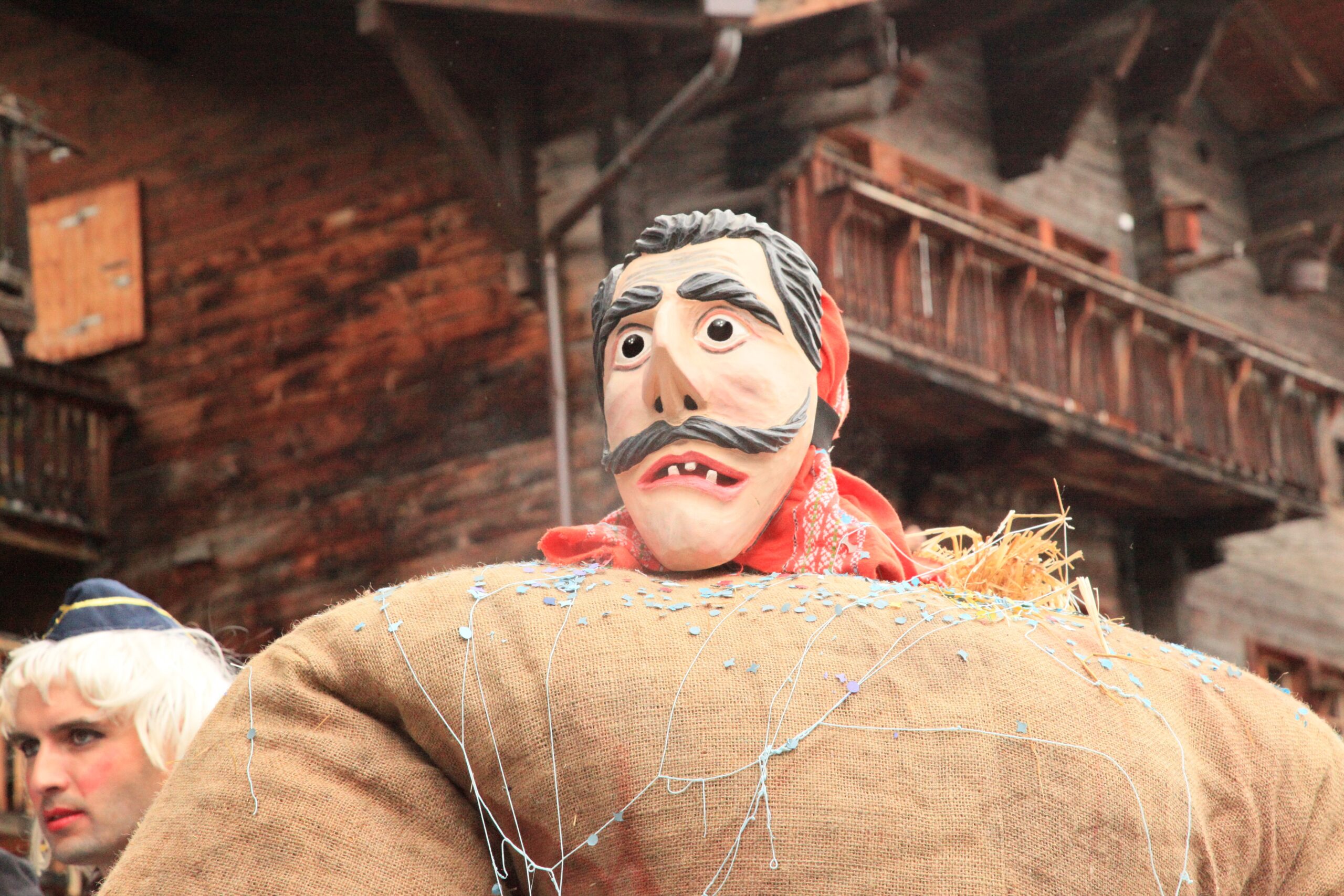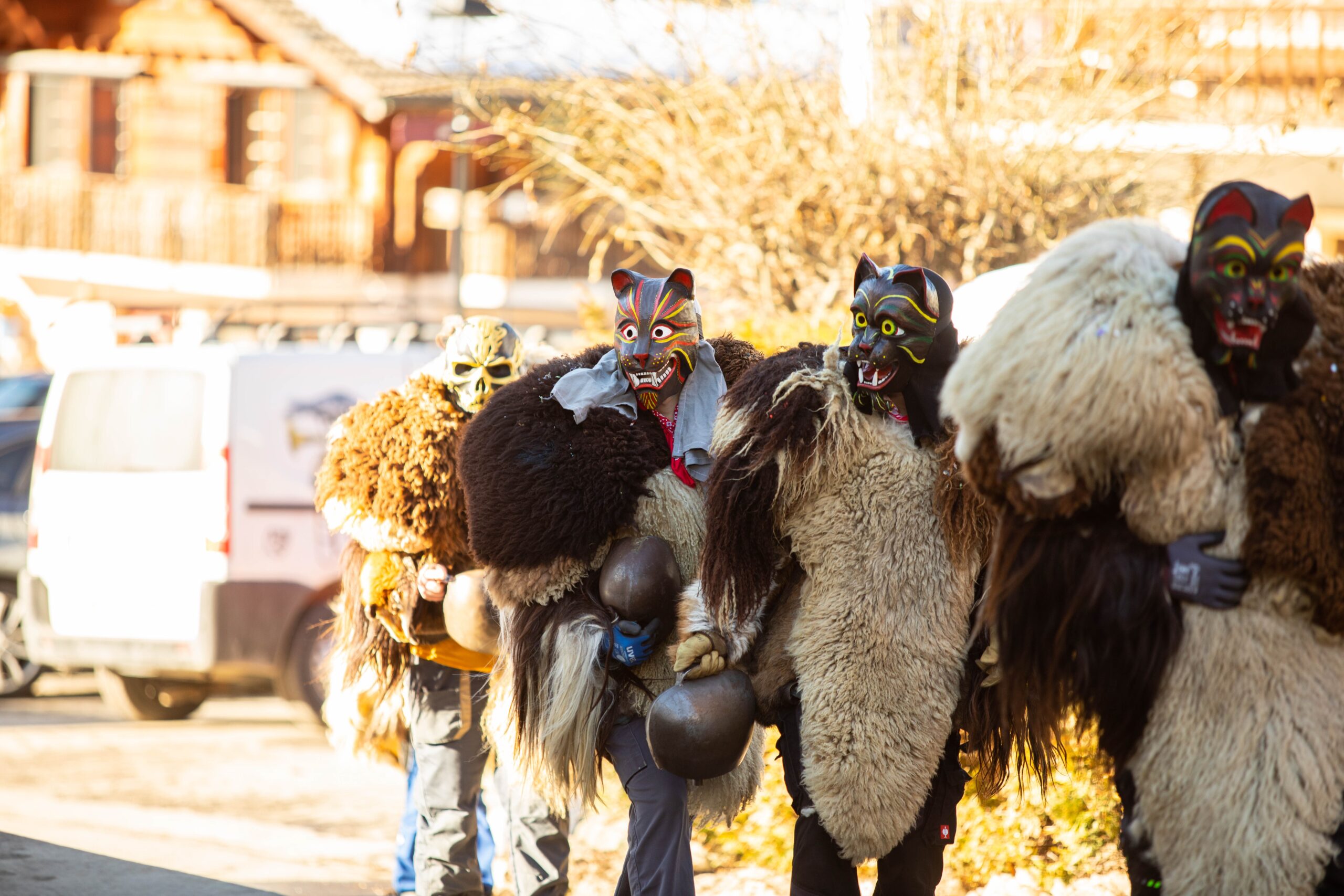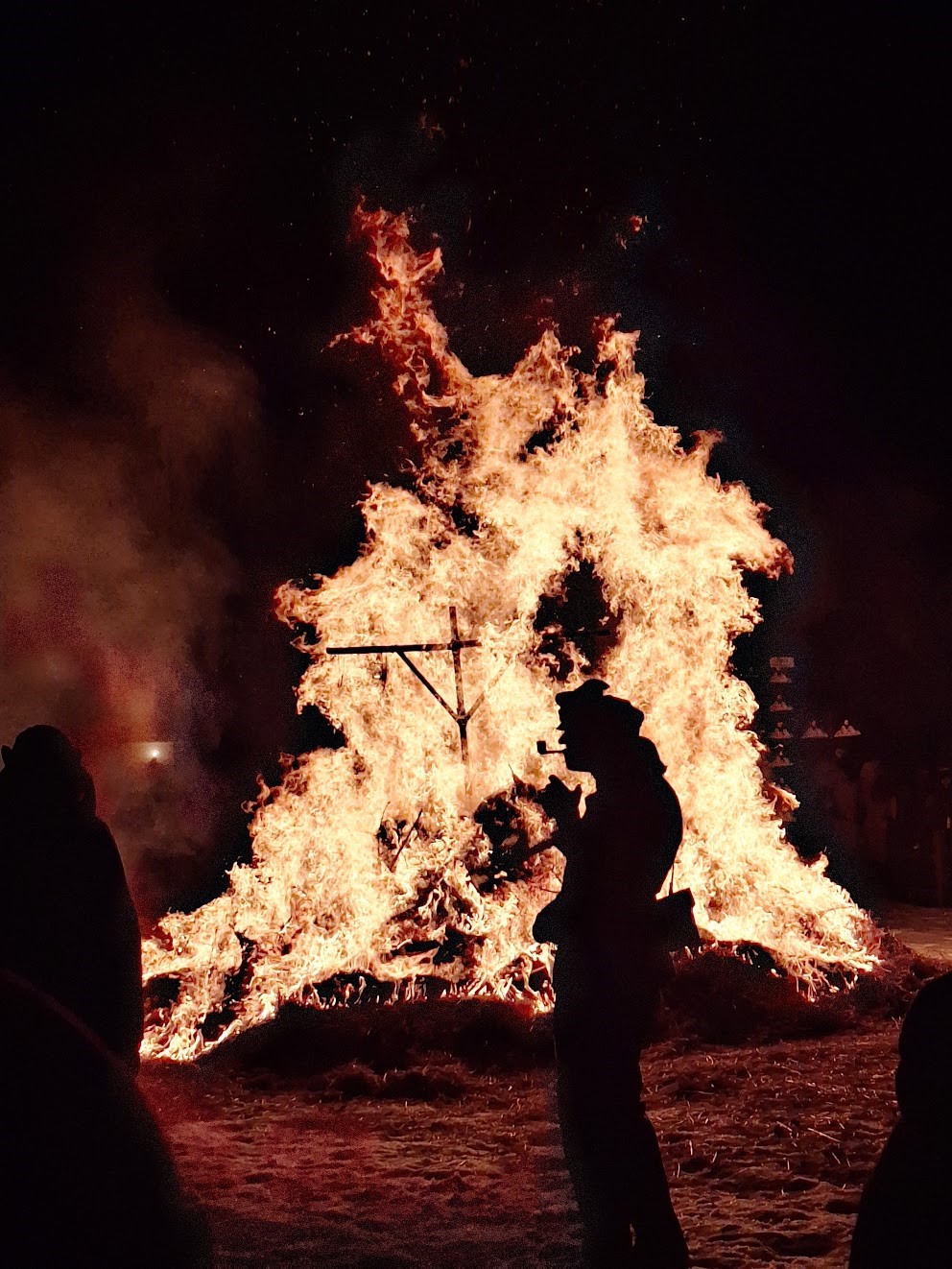The cold is sharp, biting, while a singular effervescence floats in the air. In the distance, a deep sound echoes through the valley, like an ancient, profound heartbeat. These are not mere bells ringing, the “sonnettes,” but rather a call, a signal that something is stirring.
In Evolène, each winter, the ordinary world seems to fade away, giving way to an immutable ritual. Here, Carnival is not just a festival: it is a metamorphosis, a plunge into another time where the boundary between the invisible and the tangible grows dim.
The origins of the Carnival of Evolène are lost in the mists of time. Long before ski resorts drew crowds and tourism invaded the mountains, the inhabitants, isolated in their valley, fought against winter with their own weapons: rites, masks, bells, and a visceral need to confront that which cannot be named.
In times past, these ceremonies served to ward off evil spirits, to ward against the dangers of nature as beautiful as it was merciless, and to welcome spring. With time, they transformed into a popular celebration, but their essence remained intact.
From January 6th, something shifts. The village enters carnival as one might enter a trance. What was once a peaceful place dons another face.
Through the narrow streets, shadows slip by, unsettling: the Peluches, emblematic figures of the carnival. Covered in animal hides, they wear strange carved wooden masks, the “visagères,” with frozen expressions, almost disturbing. They advance with heavy steps, their “sonnettes” resonating in the muffled silence of the snow. Impossible to know who hides beneath these costumes. It is this mystery that makes spectators shiver.
In a corner, a group of Maries amuses itself by calling out to passersby. These men dressed as women wear traditional dresses and mischievous smiles. They wander, hail, make people laugh and surprise them, reminding all that carnival is also a moment of derision, a space where social conventions fade away.
Then come the Empaillés. Massive, imposing, covered in straw until they no longer resemble humans, they progress through the street with slowness, sweeping the snow with broad, almost ceremonial gestures. They embody something archaic, visceral. Their mission seems clear: to awaken the village, to shake the established order, to remind that carnival exists to invert roles, to erase bearings.
To experience the Carnival of Evolène is not merely to witness a spectacle. It is to be caught up in an atmosphere, to feel the snow crunching beneath one’s steps, to hear the breath of wind mingled with the tinkling of bells, to perceive the scent of crackling wood fire nearby.
It is to see torchlight dancing on masked faces and wonder, for a moment, whether one remains in the 21st century or has plunged into a bygone era.
Mardi Gras marks the apex of the ritual. The Poutratze, an effigy of straw, is brought to the square. In times past, it was believed that burning this symbolic being would drive away winter and summon spring. Today, the gesture has lost its magical character, but the intensity of the moment remains intact. The fire rises in the black night, faces illuminate, and in the respectful silence of the assembly, each person feels, deep within, that something inexplicable is taking place.
The Carnival of Evolène is not merely a local affair. It intrigues, attracts, and fascinates well beyond the valley. Each year, visitors come from Switzerland, Europe, sometimes from even further afield to understand what makes this event so unique.
Kylian Maître, president of the Carnival committee, knows this well: “The carnival isn’t just a tradition we perpetuate for pleasure. It’s a way of reconnecting with who we are. Each year, young people from the village get involved to keep this celebration alive. Without them, it would disappear. But here, traditions don’t die: they evolve.”
As proof of this growing interest, in 2011, the Carnival of Evolène was presented in Limoux, France, alongside other carnivals of the world. An exchange that showed that, despite cultural differences, this need to disguise oneself, to reinvent oneself, to defy winter, is universal.
Those who witness the Carnival of Evolène for the first time rarely leave unchanged. Something shifts within them.
Perhaps it’s the confrontation with these frozen masks, yet strangely expressive? Perhaps it’s the hushed atmosphere of the village, where silence and tumult coexist? Perhaps it’s that moment just after the bonfire when everyone remains there, facing the embers, as if the fire had burned far more than mere straw?
Those who participate in the Carnival of Evolène do not merely attend it: they embody it.
But something inexplicable remains in this moment, existing only for those who live it.
Photo credits:
Karine Chevrier 2024
Sandrine-Marie Thurre 111 ans des Maries 2024



